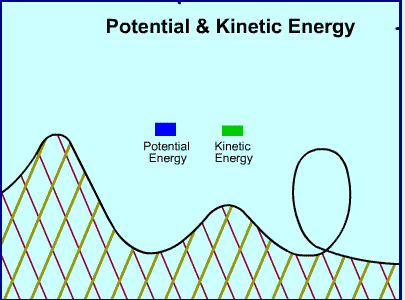

Type
of energy
|
Potential
|
Kinetic
|
|
Equation
of energy
|
Ug
= mgh
|
K=½mv²
|
|
When
energy is high
|
at
the top of a hill; chain
|
at
the bottom of a hill
|
|
When
energy is low
|
at
the bottom of a hill
|
at
the top of a hill
|
|
|
Why
energy is important
|
increases
force of gravity
|
increases
speed for riders
|